What is deep vein thrombosis (DVT)?
Deep vein thrombosis, or DVT, occurs when a blood clot (thrombus) forms in the major veins of the legs or arms. Once these blood clots develop, they can impede normal blood flow. DVT can be associated with a serious condition called pulmonary embolism (PE). PE occurs when a clot fragment breaks off and travels to the lungs.
Understanding how veins work helps to understand how DVT develops. Healthy veins return blood to the heart through one-way valves, which prevent the backward flow of blood. Diseased veins have weakened valves, allowing blood to flow backwards, pooling in the veins, and increasing risk of DVT and other complications.
Chronic DVT often causes venous scarring and obstruction, which may lead to swelling, pain, and changes in the skin, including skin ulceration.
Risk factors for DVT
- Long periods of inactivity
- Major surgery
- Extended travel
- Narrowed veins
- Pregnancy
- Trauma or injury
- Oral contraceptives
- Blood clotting disorders
- Obesity
- Family history of DVT
Approximately 1 in 1,000 people will develop DVT in their lifetime.
What are the symptoms of dvt?
- Painful, swollen legs
- Redness or discoloration of skin
- Skin ulceration may occur with chronic DVT
- Shortness of breath or chest pain in cases of pulmonary embolism (clot in lung artery)
How is DVT diagnosed?
Ultrasound
This is considered the non-invasive gold standard in detection of acute DVT.
Blood tests
Patients with DVT usually have an elevated D-dimer. In some situations, additional testing may be indicated to determine genetic risks for DVT.
Other
Occasionally, other specialized imaging techniques such as venography or CT may be needed for a full evaluation, particularly in cases of extensive, more central DVT.
Acute vs. chronic DVT
Acute DVT
Describes a blood clot, or thrombus, that is less than two weeks old. In severe cases, an acute clot can often be removed by endovascular mechanical thrombectomy and/or thrombolysis. The goal of treatment is to restore blood flow and prevent longer-term complications associated with vein scarring and occlusion.
Chronic DVT
After several weeks, DVT becomes fibrotic and scars the involved veins which can obstruct blood flow back to the heart. Patients with chronic DVT often experience chronic leg swelling and pain, skin discoloration, and even skin ulceration. In many severe cases, chronic DVT obstructions can be treated using angioplasty and stenting to improve blood flow.
What are DVT treatment options?
Blood thinners
Injectable and pill-form blood thinner medications are commonly used to prevent further clotting.
Thrombolysis/ thrombectomy
For serious DVT cases that involve larger, more central deep veins, clot can often be removed in order to restore normal flow and prevent scarring and vein occlusion.
Vena cava filter
This treatment method is reserved for situations when blood thinners are contraindicated or ineffective. The filter prevents large blood clots from passing to the lungs. Filters are typically temporary and are ideally removed when no longer needed.
Compression stockings
Worn from the feet to the knees or thighs, these medical-grade stockings help minimize swelling that occurs with DVT and improve circulation.
Venous revascularization
In cases where chronic DVT has resulted in severe symptoms such as leg swelling, skin discoloration and skin ulceration, the larger critical veins may be reopened using angioplasty and stents in order to improve blood flow.
Preventing DVT
These are some things you can do to reduce the risk of developing DVT:
- Avoid prolonged sitting
- Exercise regularly
- Make healthy life choices



